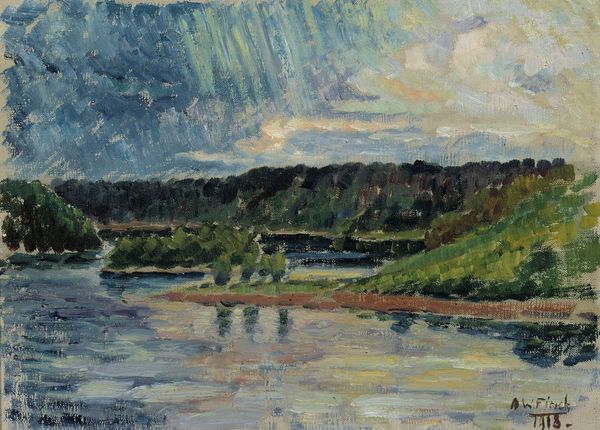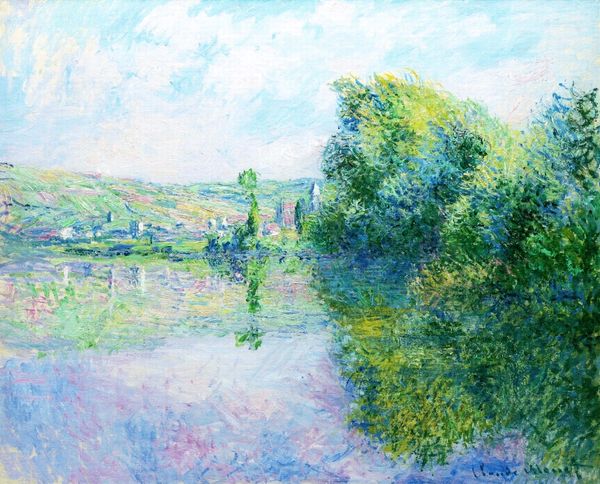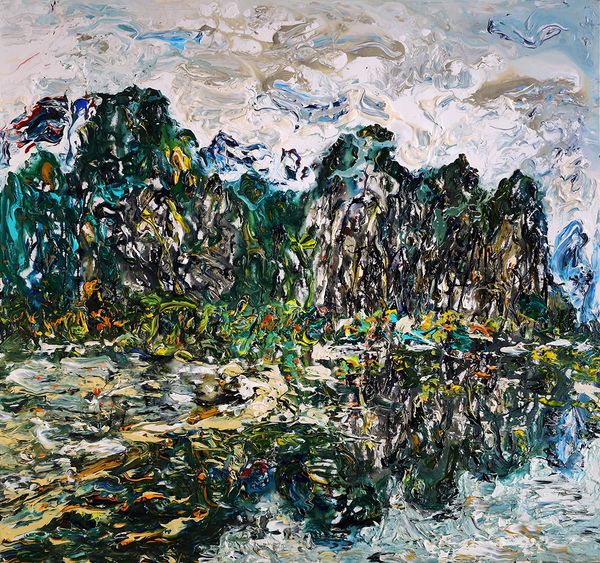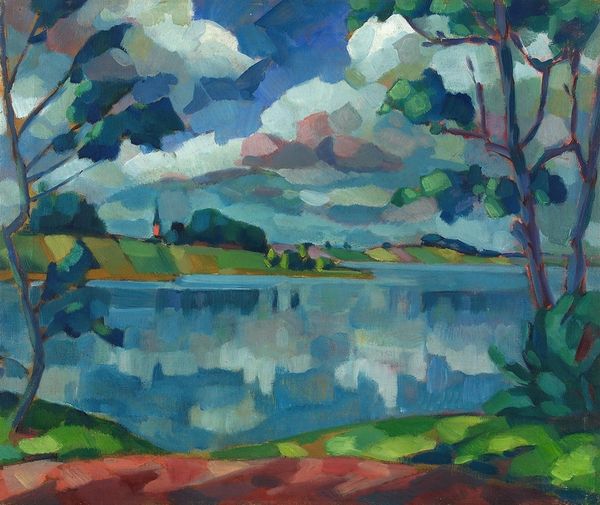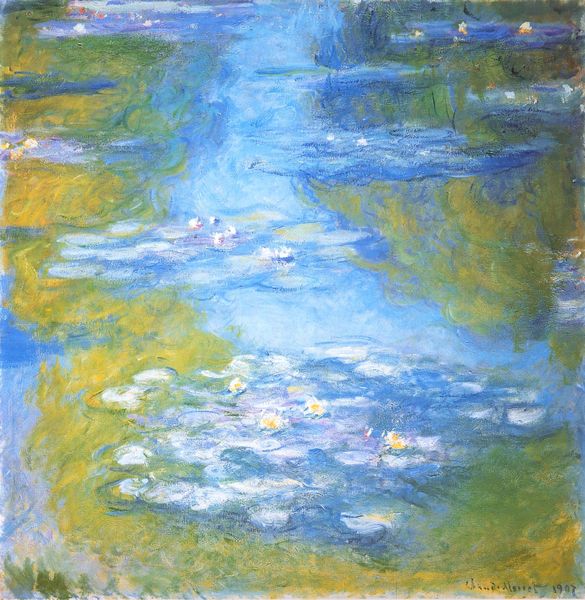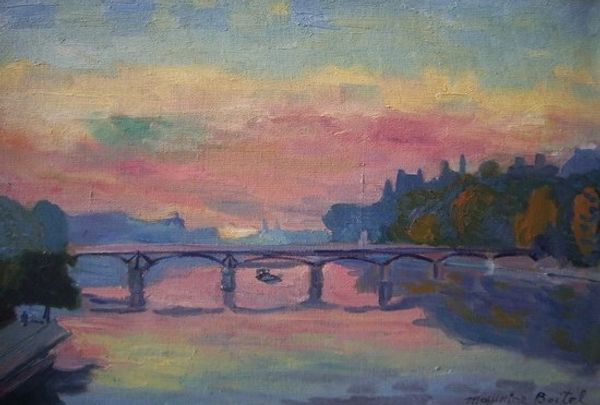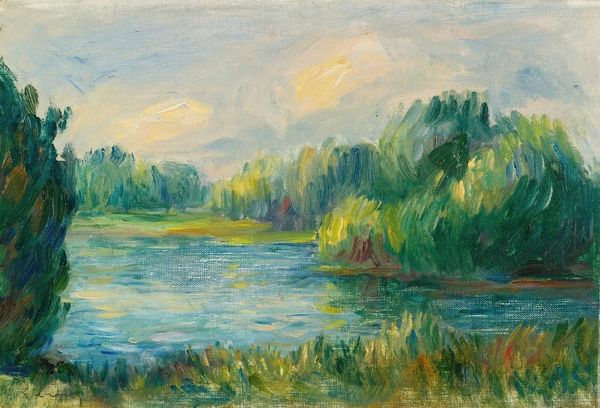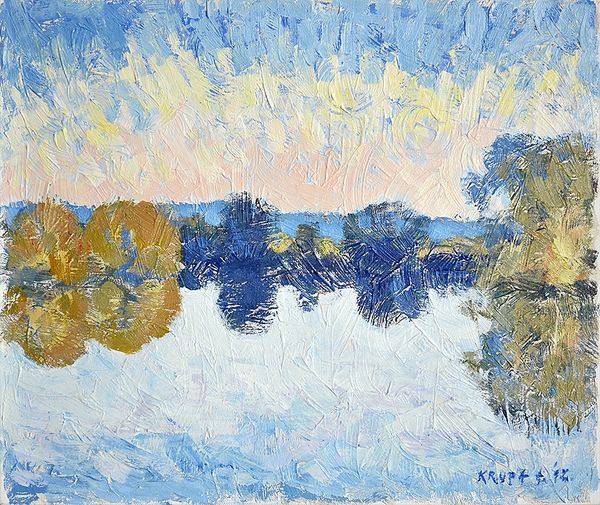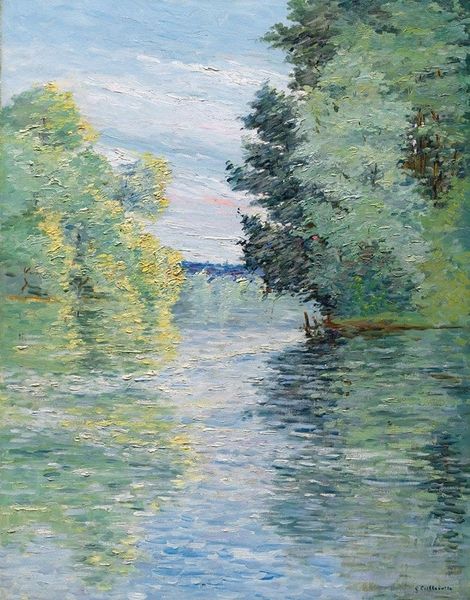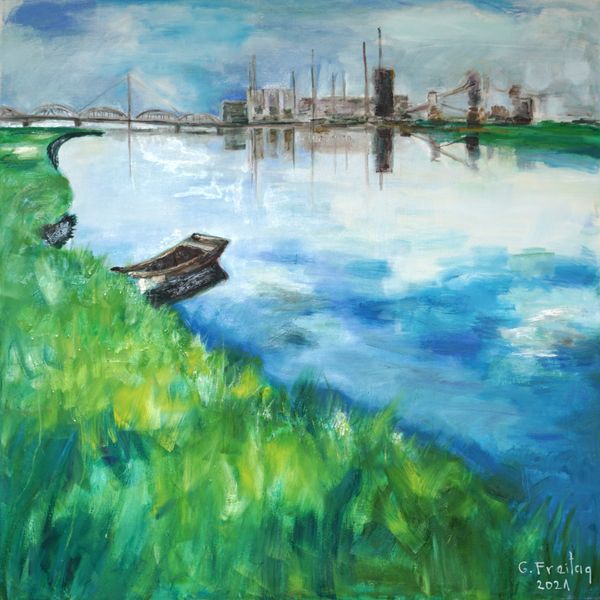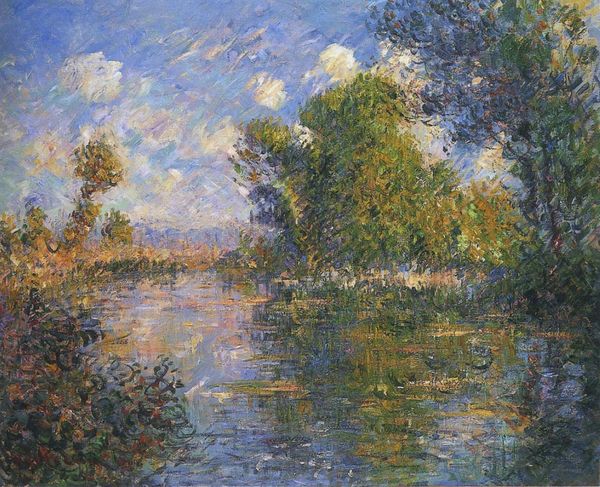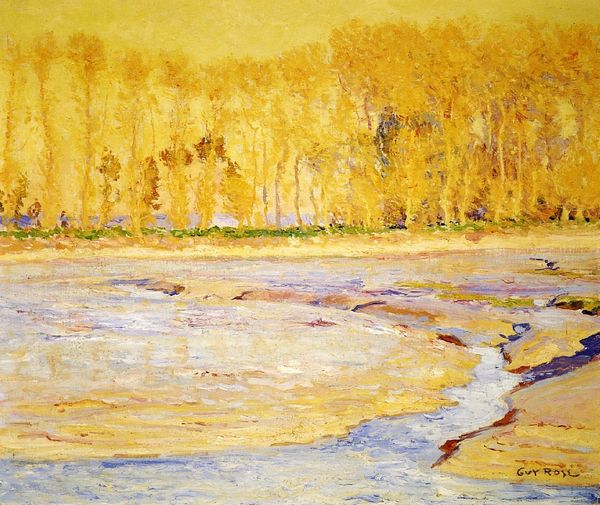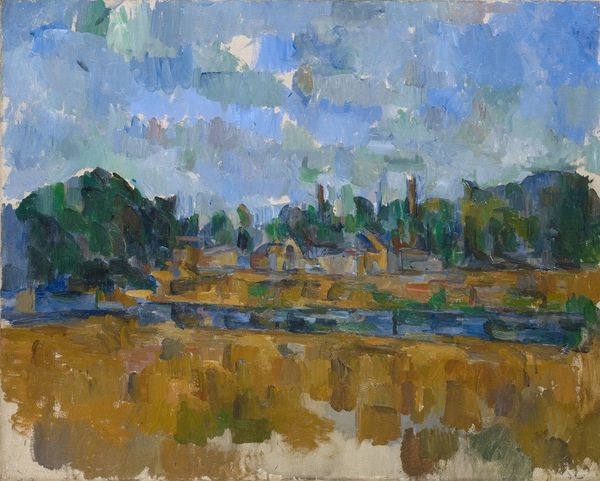
Dimensions: 100 x 80 cm
Copyright: Copyright: Gazmend Freitag
Editor: This is Gazmend Freitag’s "The Old Railway Bridge in Linz," painted in 2016, using oil paint and acrylic on canvas. It strikes me as a moody, almost somber landscape, dominated by blues and greens. What draws your attention when you look at this piece? Curator: I’m particularly interested in Freitag's engagement with his materials here. The visible brushstrokes, the layering of the oil and acrylic—these choices speak to the labor involved in creating the artwork, a physical process of building up the image. How do these choices affect your perception? Editor: It gives it texture and almost makes it more immediate, like you can see the artist’s hand in it. It’s not trying to hide the process. Curator: Exactly. And in a way, the subject matter – an old railway bridge, a product of industrial labor – reinforces this idea. Consider the social context: what might this bridge have represented to the people of Linz? Think of the economic activity, the movement of goods and people... Editor: So, the bridge isn’t just a visual element; it represents a system of production and exchange. Is that why the material quality matters? Curator: Precisely! Freitag isn't simply depicting a scene, he's subtly commenting on the industrial and social infrastructure that shapes our environment. The heavy brushstrokes might even evoke the grit and grime associated with industrial work. Does seeing it this way change how you view the "somber" mood you initially described? Editor: Yes, definitely. It’s less about sadness, maybe, and more about the weight of industry and labor embedded in the landscape. I hadn't thought of it in terms of production before. Curator: Paying attention to the materials and their manipulation, the social context, reveals so much about what an artwork can communicate. It shows us how even a landscape painting engages with bigger questions about labor, industry, and our built environment. Editor: This approach of linking materials and methods to their cultural context really broadens how I see art, connecting it to so much more than just aesthetics. Thanks for the insightful analysis.
Comments
No comments
Be the first to comment and join the conversation on the ultimate creative platform.
